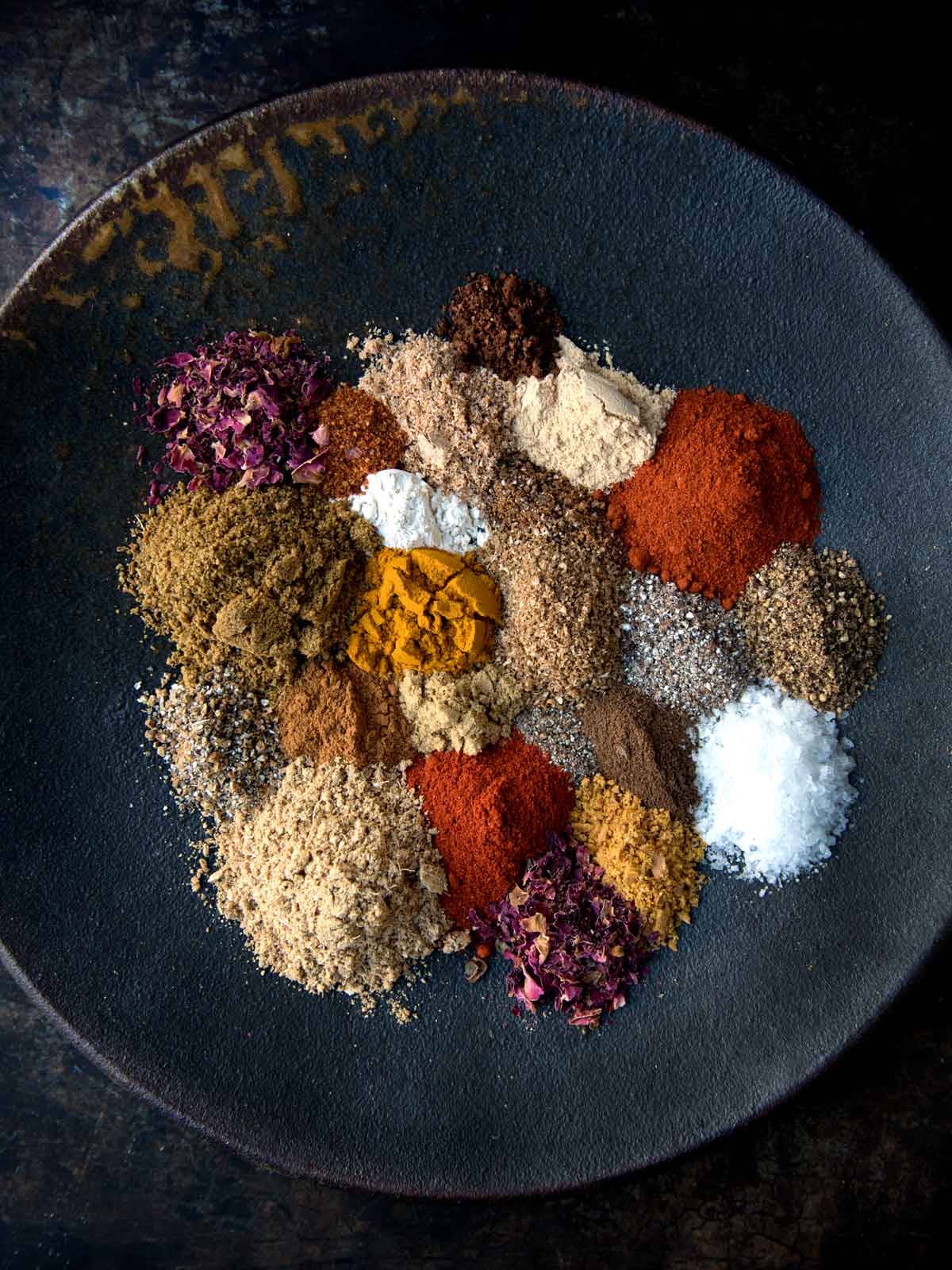
In antiquity, many civilizations used spices for various purposes, including health benefits/medicinal properties, spiritual rituals, food preservation, currency (think spice trade), etc. Over time, we’ve also come to learn that spices are rich in health-promoting plant compounds (phytochemicals) that reduce damage to our body’s cells by fighting inflammation and infection, boosting immunity, reducing pain and improving blood sugar control, memory and cognitive function.
If you look up the health benefits of just about any spice, you’ll find that most have some interesting immune boosting properties. When used in combination, spices have the ability to create complex flavor profiles and to create potent and synergistic health effects.
Spices intensify the flavor and aroma of food. They allow you to be creative and adventurous with your cooking. So, no more boring meals. You literally need to add just a bit of spice to your life.
While I often use spices in cooking (and have a sizable, disorganized spice cabinet), I realized that I was not entirely familiar with what goes into some of the world’s most common spice blends. That led me on today’s journey — learning more about the Moroccan spice blend Ras el Hanout.However, what I discovered is that the answer is not as simple as you might expect…
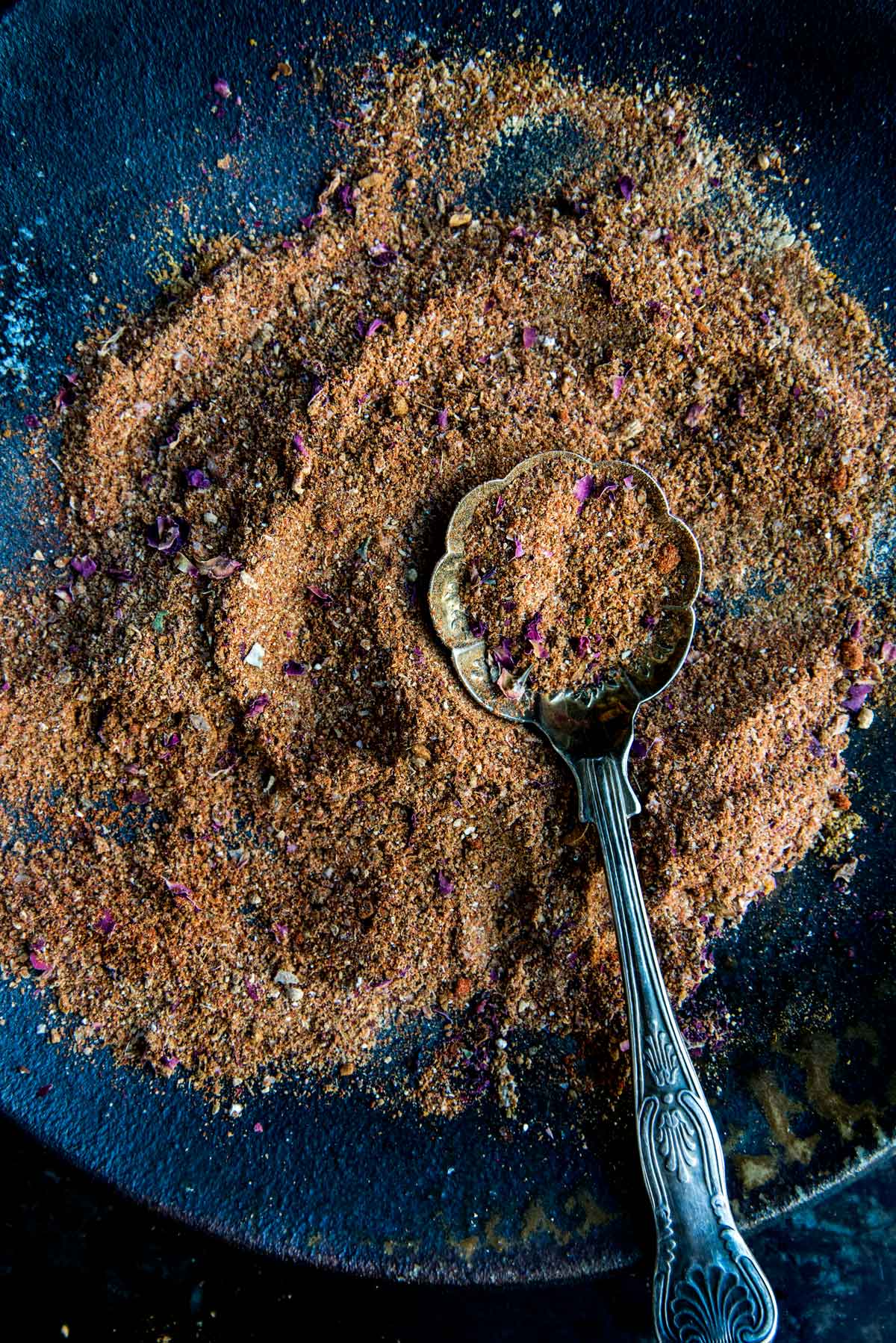
Ras el Hanout translates to “head of the shop” in Arabic or ‘top shelf’, referring to the best spices a store has to offer. There’s no one single blend for ras el hanout. Rather, this complex North African [Moroccan], Sephardic spice blend varies from region to region, from town to town, shop owner to shop owner and from family to family. Sometimes it can include as many as 50 to 100+ individual spices. Other times, the number of spices may be paired down significantly. In Morocco, ras el hanout finds its way into everything and anything, from dry rubs for grilled meats, to fish, spreads, soups and stews.
Commonly used spices in ras el hanout include allspice, anise seed, black and/or white peppercorns, black and/or green cardamom pods, cayenne, cinnamon, cloves, coriander seeds, fennel seed, ginger (dried), mace, nutmeg, rose buds (dried) and turmeric (dried). Some blends include cumin, paprika and saffron. Still others contain grains of paradise, orris root, lavender, dried galangal, black cumin/nigella seeds and long pepper, the latter a variety of peppercorn that grows in long spikes and has a hotter and more complex flavor than standard black pepper. A good spice shop (like Kalustyans, NYC) will make acquiring some of the more uncommon spices a straightforward process.
Then there are the more rare/exotic spices/herbs, none of which are in today’s iteration of ras el hanout — though, if I ever find my way to Morocco, would be curious to track down the following: ash berries and monk’s pepper (thought to be aphrodisiacs), along with chufa nuts, cubebe pepper (aka java or tailed pepper), Kherousâ, qebaba, hil el habachi, gouza el asnab, oud lamber, tara soudania (earth almonds, a strong smelling stalk from Sudan), gouza sahrouia (guinea pepper, an aphrodisiac from the Ivory Coast), and potentially hazardous belladonna berries and cantharides (shiny green Spanish fly beetle, which I read is now prohibited from being sold).
A middle-of-the-road version of ras el hanout might have as few as four to six common spices in equal proportions, whereas a good one will be comprised of at least a dozen common and rare spices in different proportions. To enhance their flavors, whole spices might be toasted before being ground or pounded in a mortar and combined.
You can find commercial blends of ras el hanout. However, they most likely won’t be as complex as the one you make yourself. If feeling ambitious and have access to a good spice shop (one that preferably sells spices in bulk, so you can purchase as little or as much as you like), you can certainly create your own ras el hanout — even without the more elaborate Moroccan additions.
Today, I rubbed some ras el hanout on a 2 1/2 pound leg of lamb and smoked it for two hours at 220-240 F (medium-rare) and served with some crispy saffron Jasmine rice and a pea shoot+watermelon radish salad.
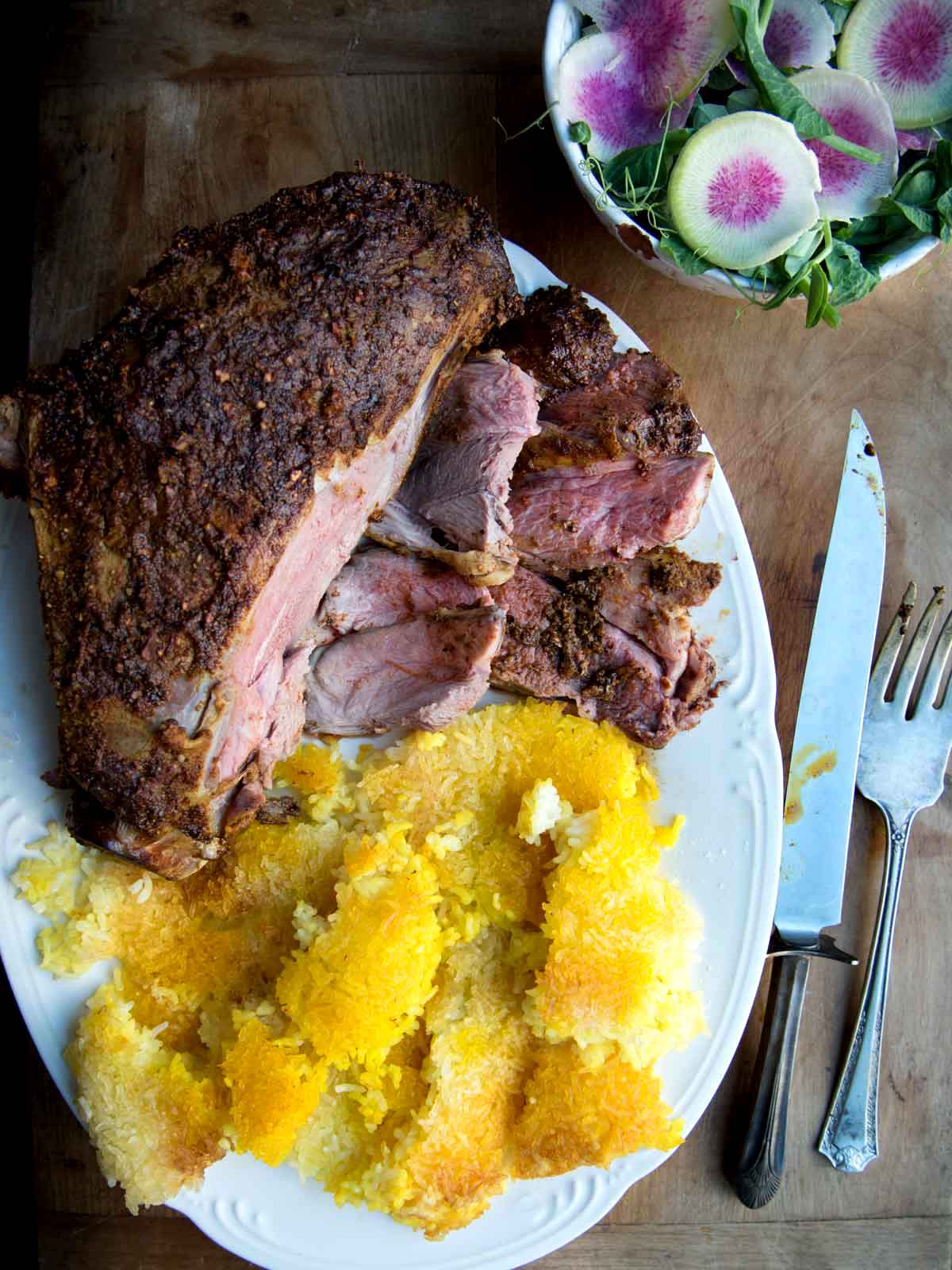
Ras el Hanout
My version has 23 spices, most of which I actually had on hand (a perk of being an adventurous cook). Curiosity got the better of me, so I decided to track down a few more spices, for instance, orris root and long pepper; but don’t worry if you can’t find these, you can easily omit them.
Makes about 1/2 cup
4 teaspoons ground cumin
3 teaspoons ground ginger
2 teaspoons sweet paprika
2 teaspoons rose petals
2 teaspoons ground coriander
1 1/2 teaspoons hot smoked paprika
1 teaspoon cinnamon
1 teaspoon ground turmeric
1 teaspoon sea salt
3/4 teaspoon anise seed (or fennel seed)
3/4 teaspoon ground all spice
3/4 teaspoon ground green cardamom seed
3/4 teaspoon ground black pepper
3/4 teaspoon ground *nigella seeds/black cumin seeds
3/4 teaspoon ground *galangal
3/4 teaspoon ground nutmeg
3/4 teaspoon ground *orris root (optional)
3/4 teaspoon *grains of paradise
1 1/2 *long peppers, ground
1/4 teaspoon cayenne
1/4 teaspoon ground clove
1/4 teaspoon ground mace
1/4 teaspoon ground black cardamom
Mix all ingredients. Store in an air-tight container.
Here’s a bit more info on some of the lesser-known spices:
*Nigella Seeds/Black Cumin Seeds/Charnushka: Nigella sativa is a flavorful black seed that is also known as Black Cumin, Black Onion seed or Black Caraway seed. It’s commonly found in traditional Indian, Lebanese, Armenian and Serbian cuisines. It has a strong aroma and taste with notes of onion, oregano, and black pepper. They’re high in antioxidants and though to play a role in preventing inflammation and boosting the immune system.
*Galangal: Galangal is a rhizome (or root) that looks a lot like ginger. Its flavor is similar to that of ginger, though not nearly as spicy and with hints of lemon and cardamom. There are two types of galangal, “greater” and “lesser.” Greater galangal is larger and milder, while lesser galangal is smaller, sweeter and more intense. Greater galangal is by far the more common of the two.
*Orris Root: Orris root comes from the rhizome of the Florentine iris. The flavonoids of orris root are known to possess anti-inflammatory properties, which likely explains this root’s traditional use as a remedy for sore throats and colds. It has a scent similar to violets and has a floral, berry-like (raspberry) and woodsy flavor profile.
*Grains of Paradise: Grains of Paradise come from a leafy plant native to West Africa. The name was given to them by spice traders in the middle ages who were trying to inflate their price. Traders claimed that these special peppers only grew in Eden and that they were collected as they floated down the rivers of paradise. Their taste is reminiscent of black pepper, albeit with hints of citrus, flowers, cardamom and coriander.
*Long Pepper: A variety of peppercorn that grows in long spikes and has a hotter and more complex flavor profile — with more spice overtones — than standard black pepper. More specifically, you’ll notice the heat and earthiness that you find with black pepper, but you’ll also detect hints of some of the spices we think of as baking spices, such as nutmeg, cinnamon and ginger.
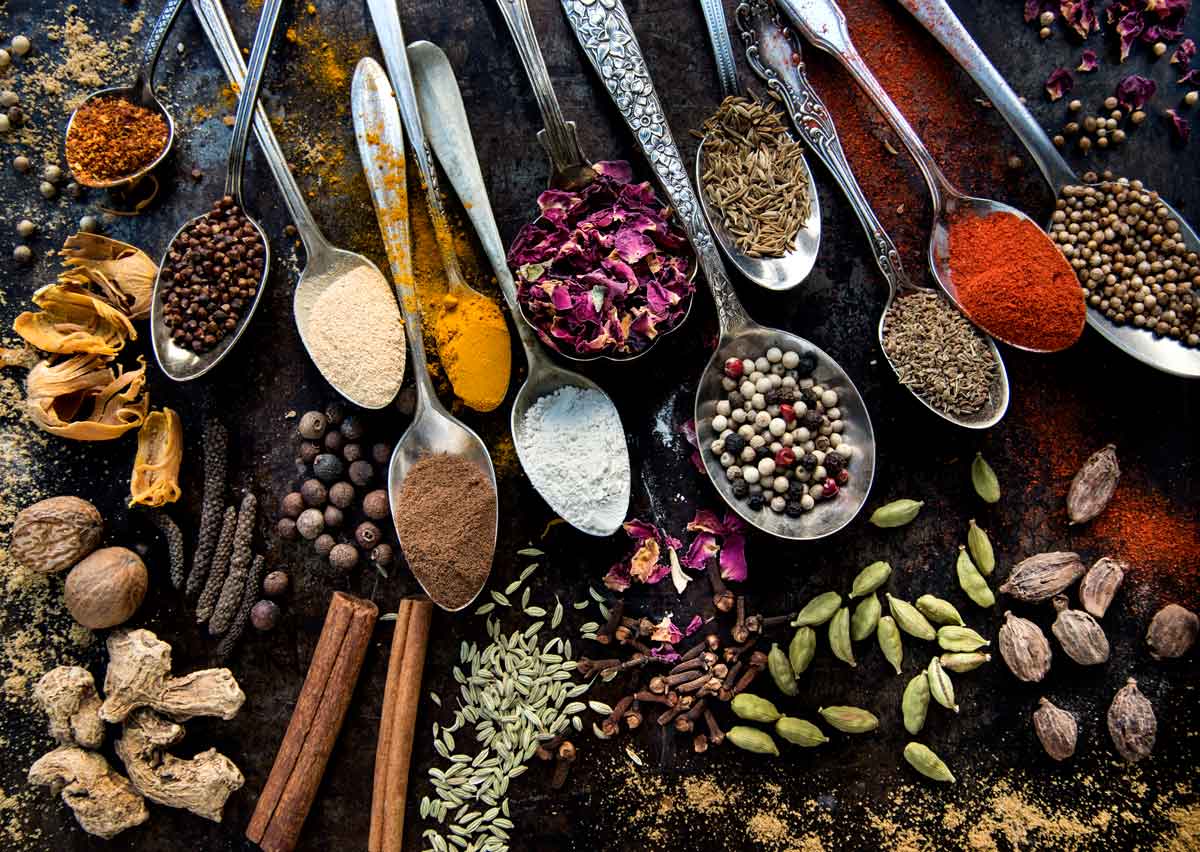
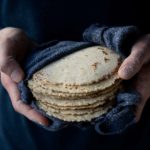
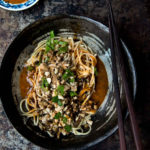
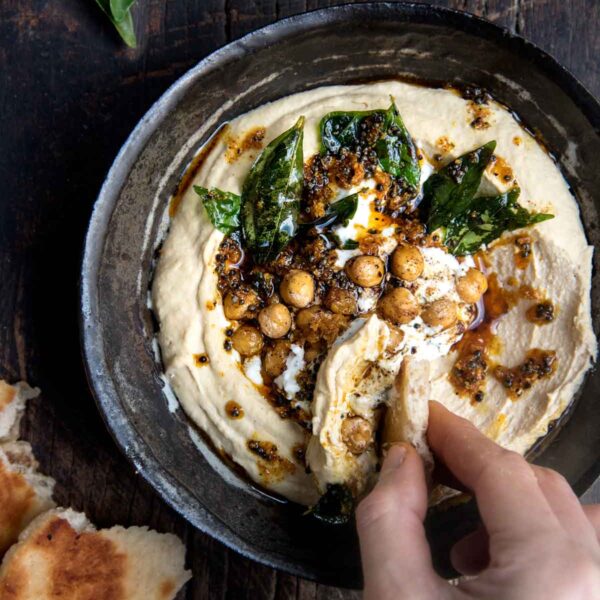
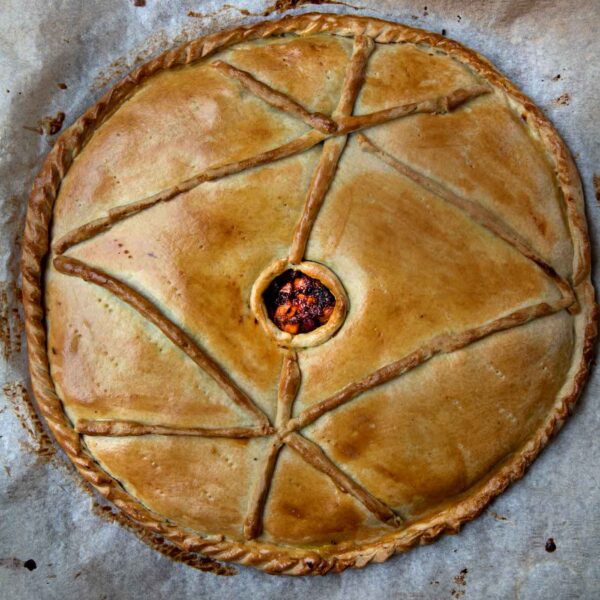
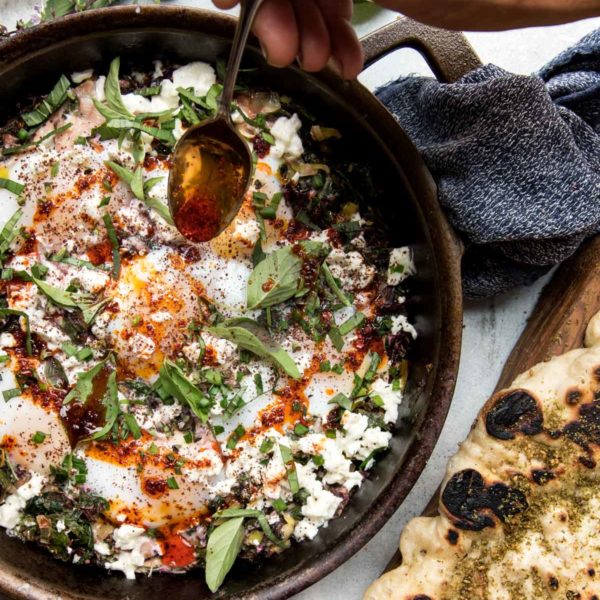


3 comments
Mr.Tim
The spices you seek in Morroco you’ll find that Kalustayn’s has many under different names and some are already on your list, twice.
Qebaba = Cebub Pepper
Gouza Sahraouia = Malaguetta Pepper (similar to Grains of Paradise)
Chufa Nuts, Earth Almond = Tigernut
Gouza El Asnab = Walnuts
Oud Lamber = Orris Root
Ash Berry = Moutain-ash berry or European Rowan berry
Hil El Habachi = Asclepiadaceae (Milkweed) Fruit. Not sure which species so probably shouldn’t grab the kind from the empty lot.
As far as Belladonna Berries and Cantharides I could tell you where to get some but I’d have to… you know 😉
wildgreensandsardines@gmail.com
Thank you so much for sending this information. Need to make a trip to Kalustyan’s soon and try out some of these spices. Love that place. Cheers!